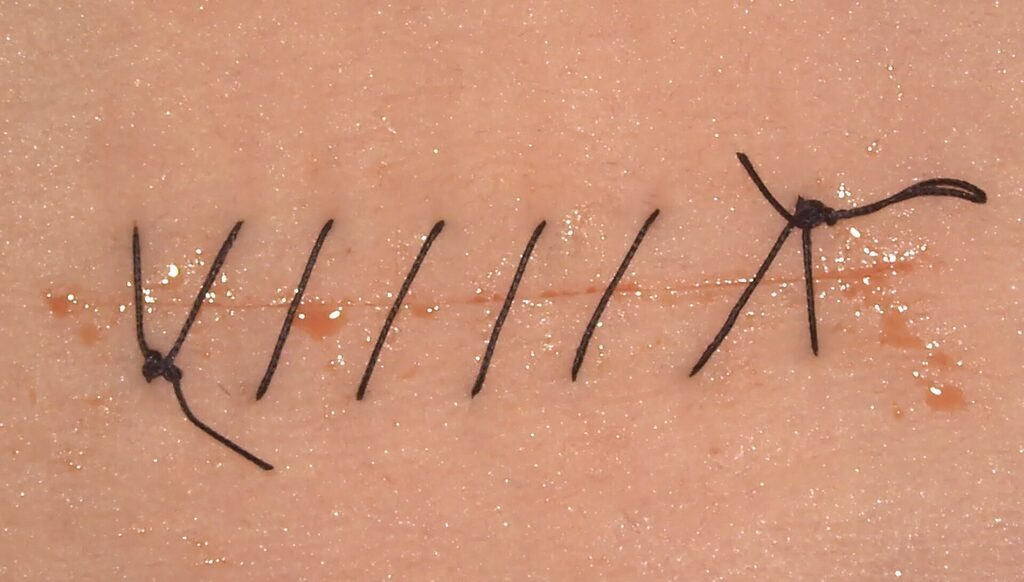Sutures are essential tools in modern medicine, helping to close wounds and promote healing. Whether following a surgical procedure or treating an accidental injury, sutures are a primary method for securing tissues together. This blog will explore the different types of sutures, their uses, and how they are applied to achieve optimal healing outcomes.
What Are Sutures?
Sutures are medical threads used by healthcare professionals to close cuts, incisions, or wounds. They are placed in the tissue to hold it together, allowing the body to heal. Depending on the type of wound and its location, sutures are chosen to facilitate healing while minimizing the risk of infection and scarring.
Types of Sutures
There are two main categories of sutures—absorbable and non-absorbable—each with distinct characteristics and uses.
Absorbable Sutures
Absorbable sutures are designed to dissolve over time, meaning they don’t need to be removed after the wound heals. These sutures are often used for internal tissue, where they support the healing process but are absorbed by the body as the tissue regenerates.
Uses and Benefits:
- Absorbs naturally over time, reducing the need for removal.
- Commonly used for internal wounds (e.g., in the stomach, intestines, or muscles).
- Examples include Vicryl, Monocryl, and Chromic Gut.
Non-Absorbable Sutures
Non-absorbable suture are made from materials that remain in the body unless removed. These are typically used for external wounds or in cases where long-term support is required.
Uses and Benefits:
- Used for external wounds and areas needing prolonged support.
- Examples include Nylon, Polyester, and Silk sutures.
Monofilament Sutures
Monofilament suture consist of a single strand of material. They are smoother and less likely to harbor bacteria due to their single-strand construction.
Uses and Benefits:
- Preferred for low infection risk areas.
- Less tissue drag and easier to handle than braided sutures.
Braided Suture
Braided suture are made of multiple strands twisted or braided together, providing greater strength and flexibility.
Uses and Benefits:
- Ideal for areas requiring extra strength and durability.
- More prone to bacterial contamination compared to monofilament suture due to the space between strands.
Common Uses of Sutures
Suture are used in a variety of medical scenarios, including surgeries, trauma treatment, and cosmetic procedures.
Surgical Procedures
Suture are essential in surgical procedures to close incisions made during operations. For example, after a skin incision or internal organ surgery, suture hold tissues together, preventing complications like infection and promoting faster healing.
Trauma and Injury Treatment
For cuts, lacerations, and accidental injuries, suture provide a quick and effective method of closure, reducing the risk of infection and scarring.
Cosmetic and Reconstructive Surgery
Suture are crucial in plastic and cosmetic surgeries, where minimal scarring is a priority. Surgeons use specialized techniques to ensure that suture blend seamlessly with the surrounding tissue, helping to maintain the skin’s aesthetic appearance.
The Process of Suturing
The process of suturing involves several crucial steps:
- Cleaning the Wound: The wound must be thoroughly cleaned before suturing to prevent infection. Sterile saline or water is commonly used.
- Selecting the Suture: Based on the wound’s type and location, the appropriate suture material and technique are chosen.
- Suturing the Wound: The surgeon or healthcare provider uses a needle to pass the suture through the wound edges, bringing the tissue together.
- Tying the Suture: After placing the suture, it is tied in a knot to hold the tissue together.
There are different suturing techniques, such as interrupted, continuous, and subcuticular sutures, each with its advantages depending on the wound’s location and the desired cosmetic result.
Aftercare for Sutures
Proper care after suturing is essential to ensure proper healing and reduce the risk of complications. Here’s how to care for a wound with suture:
- Keep the wound clean and dry: Follow your healthcare provider’s instructions on how to clean the wound and change the dressing.
- Monitor for infection: Watch for signs of infection such as redness, swelling, warmth, or unusual discharge.
- Avoid unnecessary tension: Don’t pull or stretch the sutured area as this could interfere with the healing process.
- Suture removal: Non-absorbable sutures must be removed after a certain period, usually 7-14 days, depending on the location and size of the wound.
Complications and Risks of Suturing
While suturing is generally safe, there are some risks and complications to be aware of:
- Infection: If proper hygiene is not maintained, or the sutures are contaminated, infection can occur.
- Suture rejection: Some people may develop a reaction to certain types of suture material, causing inflammation or discomfort.
- Scarring: Depending on the wound and the technique used, sutures can sometimes leave visible scars, especially if not placed properly.
Conclusion
Suture are a critical aspect of wound management, offering a safe and effective way to promote healing while minimizing the risk of infection and scarring. Understanding the different types of suture, their uses, and proper aftercare can help ensure a smooth healing process. Whether you’re undergoing surgery, treating an injury, or seeking cosmetic care, always consult a healthcare professional for guidance on suturing and wound care.
By following proper techniques and aftercare instructions, suture can help your wounds heal effectively, promoting recovery with minimal complications.

